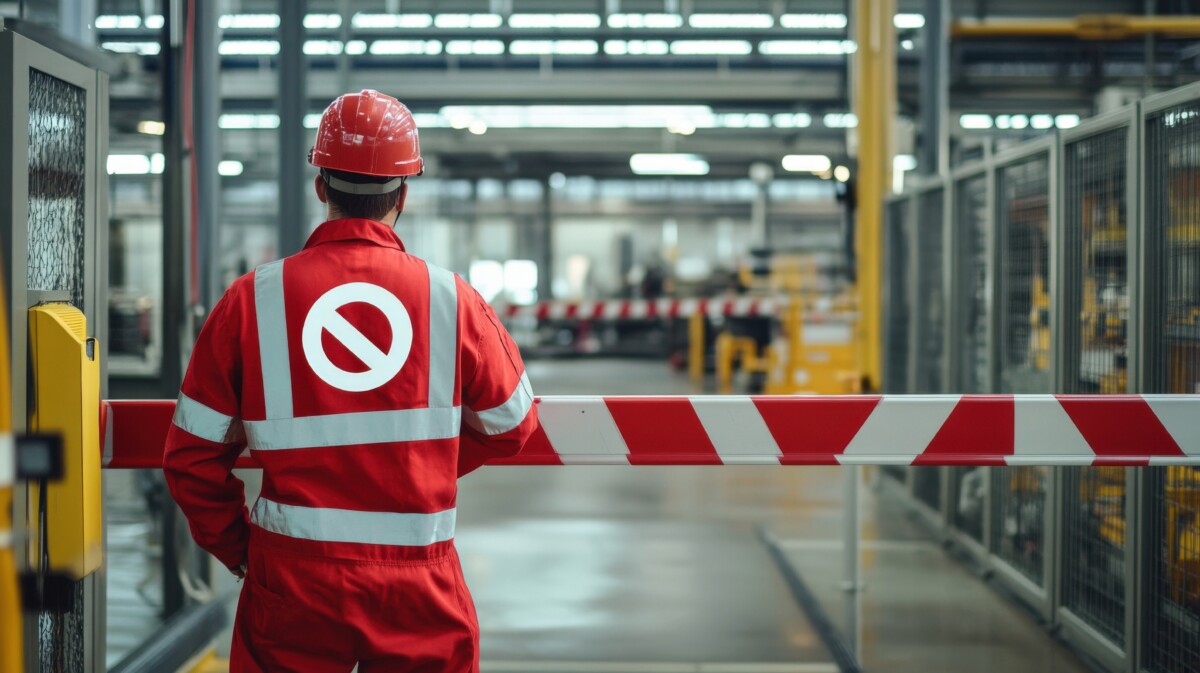Key Takeaways
- Use regular risk assessments to cut downtime, avoid fines, and keep production running ahead of your competitors.
- Map each process, list hazards, score likelihood and severity with a simple matrix, then apply controls in order: eliminate, substitute, engineer, administrate, and use PPE.
- Protect people and trust by involving workers in walk-throughs, fixing issues fast, and keeping conditions safe and predictable.
- Spot the win in quick reviews after any change or incident, because small updates to controls often prevent the next big problem.
The safety and effectiveness of the manufacturing environment rely heavily on risk assessment.
All production processes carry inherent risks, such as equipment failures, material hazards, human errors, and environmental concerns. Conducting a thorough risk assessment helps identify these risks early, prioritize them based on their potential impact, and implement effective control measures. This approach enables manufacturers to minimize disruptions, ensure regulatory compliance, and protect the health and safety of employees.
When performed systematically, risk assessment not only safeguards personnel but also supports quality standards and boosts productivity. Proper risk management leads to reduced downtime, extended equipment lifespan, and more efficient resource use. Therefore, knowing how to carry out a proper risk assessment is essential for any manufacturing process committed to long-term stability and safety.
Understanding the Nature of Manufacturing Risks
The initial step in risk assessment is understanding the types of risks inherent in manufacturing processes. These risks can include mechanical hazards, chemical exposures, noise pollution, and ergonomic issues. The production line or machinery presents unique threats based on its operation and materials used. Knowing the origin and occurrence of these hazards is essential for developing specific safety measures to prevent incidents.
Additionally, environmental and procedural factors must be considered. Exposure to hazards can increase due to poor ventilation, inadequate lighting, or the use of safety gear. Similarly, risk profiles can change over time because of shifts in workflow, personnel, or production demands. Periodic evaluation of these factors helps ensure that assessments are current and that workers operate in safe, controlled environments.
Planning and Preparing for a Risk Assessment
It should be noted that a clear plan must be developed and the scope of evaluation clearly defined before beginning the assessment. This includes determining which manufacturing areas, machines, or activities to examine. A risk assessment team should be formed, preferably including personnel from operations, maintenance, and safety departments. Their combined experience helps ensure that daily operational issues and regulatory requirements are considered.
One key aspect of preparation is data collection. Information such as incident records, maintenance logs, and safety reports can provide valuable insights into recurring problems or weak points. Additionally, visual inspections and interviews with workers can reveal hidden hazards not documented elsewhere. Gathering this information in advance allows the assessment to focus on the most critical areas while maintaining a comprehensive understanding of all potential risks.
Identifying and Evaluating Potential Hazards
After planning, the next step is to identify potential hazards in the manufacturing process. This includes closely examining all tasks, equipment, and materials used in production. It’s important to observe how machinery functions, how employees handle it, and the possibilities of malfunction under normal or abnormal conditions. For example, equipment that overheats or machinery that is poorly maintained can pose fire or injury risks if not properly monitored.
Once hazards are identified, they should be evaluated for their likelihood and severity. This helps determine which risks are most likely to cause harm to workers or disrupt operations. Some risks might cause minor injuries or temporary work stoppages, while others could lead to serious damage or death. Prioritizing these risks allows manufacturers to allocate resources efficiently and address the most dangerous issues first as part of their safety management process.
Implementing Control Measures and Safety Procedures
After the assessment, control measures should be implemented to minimize or eliminate identified risks. These controls can include engineering modifications, such as installing guards or ventilation systems, or administrative measures like updating training programs and maintenance schedules. Personal protective equipment is also crucial, especially in processes involving chemicals, heat, or moving machinery. Clear signage, regular inspections, and designated safety zones help support employee compliance and awareness.
Emergency preparedness can not be neglected. The manufacturing plants should also have response systems such as fire extinguishers, alarms, and safety showers to deal with unforeseen eventualities. The frequent exercises will ensure that employees are familiar with the way they can respond swiftly in dangerous circumstances. The preservation of such systems in proper working conditions is an essential aspect of risk reduction and it promotes the culture of never-ending safety enhancement through the facility.
Monitoring and Reviewing Risk Controls
Risk assessments are ongoing processes that should be continually reviewed. Potential hazards evolve with advances in manufacturing technology, materials, and regulations. These assessments are performed consistently to ensure safety measures remain effective and emerging risks are identified promptly. Regular inspections, employee feedback, and performance monitoring help gauge whether current controls are achieving their goals.
Compliance with occupational health and safety standards also relies on periodic reassessment. Many regulatory agencies require records showing that risk evaluations are conducted regularly and that findings lead to action. Maintaining detailed records and updating assessments periodically demonstrate a company’s responsibility and concern for worker safety. This not only fulfills legal requirements but also enhances the organization’s reputation as a responsible and safety-conscious entity.
Conclusion
Risk evaluation is a basic part of developing a safe and efficient workplace through comprehensive risk assessment in manufacturing processes. Manufacturers can prevent accidents, protect their employees, and maintain an uninterrupted working process by detecting hazards, analyzing their effect, and taking the best control measures. Ongoing monitoring and periodic reviews make sure that practices of risk management are also robust and responsive to external circumstances. Finally, safety and productivity in contemporary manufacturing settings are based on the proactive and well-organized risk assessment practice.




